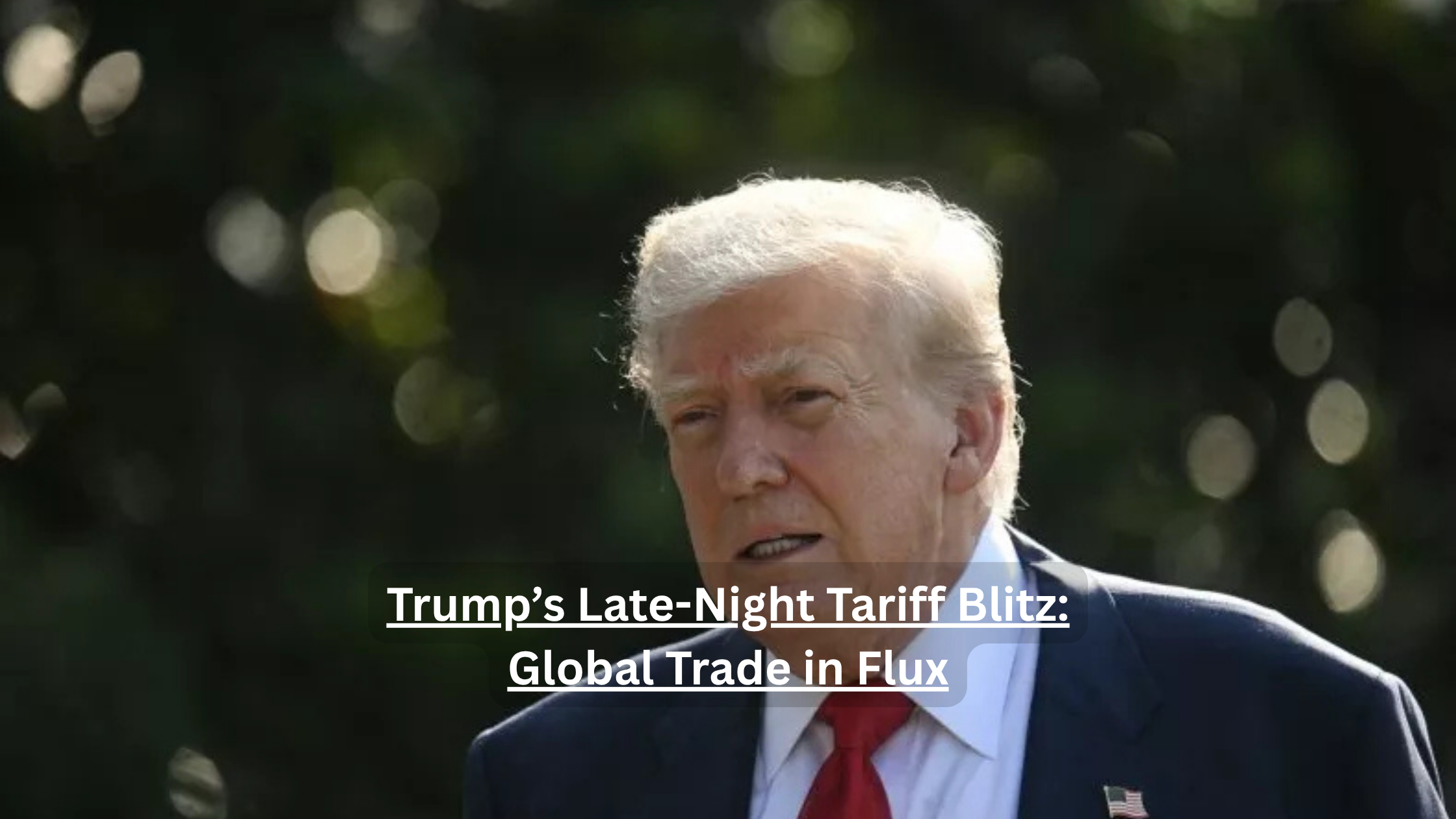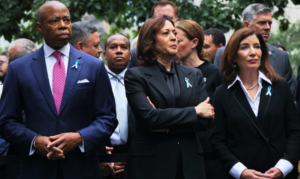Another Late‐Night Trump Trade Twist Ahead of Global “Go” Day
In a dramatic turn as the August 1 deadline loomed, President Donald Trump unveiled a new round of sweeping tariffs and last-minute trade maneuvers—moves that swiftly reshaped global negotiations in real time.
Global Trade in Turmoil: Last-Minute Scramble
As the clock ticked down, nations raced to secure trade agreements before America’s tariff avalanche landed. Countries such as South Korea, Indonesia, and the EU managed to strike deals under pressure, while others—including India, Taiwan, Mexico, China, and Switzerland—either face rising duties or received temporary reprieves.
Canada, in particular, emerged as a focal point. The United States raised tariffs on Canadian imports to 35%, citing its recognition of Palestinian statehood and concerns over fentanyl trafficking. Trump warned that this diplomatic shift complicated trade talks significantly.
Mexico, meanwhile, secured a 90-day delay on additional tariff hikes following direct engagement with President Sheinbaum—a move to ease tension and allow further negotiation.
Liberation Day Tariffs Remapped
Since declaring April 2 as “Liberation Day,” President Trump has exponentially expanded U.S. tariff authority under emergency powers. A universal 10% baseline duty was imposed, atop higher “reciprocal” tariffs targeting specific countries deemed to engage in unfair trade practices.
Tariff rates now vary widely by nation—from 10% to as high as 41% for Syria—with key partners like Canada, Thailand, India, and Taiwan facing vastly increased duties. Those who secured trade agreements saw mitigated rates; others were left exposed.
Strategic Shock or Negotiation Tactic?
Observers describe Trump’s tariff posture as unpredictable and highly strategic—characterized as the “TACO” approach: “Trump Always Chickens Out,” due to frequent threats followed by delays or reversals under pressure.
Economic analysts warn that while Trump portrays this as a revitalization of American economic independence, critics argue it risks fueling inflation, destabilizing supply chains, and harming domestic consumers more than foreign producers.
Meanwhile, the administration claims these tariffs are a means to pressure trading partners into fairer deals and boost U.S. investment opportunities abroad.
Market Ripples and Legal Headwinds
The tariff announcement rattled markets—U.S. stock futures dipped, even though volatility remained moderate compared to prior trade flare-ups. At the same time, legal experts flagged potential challenges to the administration’s use of emergency powers under the International Emergency Economic Powers Act (IEEPA), with lawsuits in motion and possible escalation to the Supreme Court.
Geopolitics Entwined in Trade
Trade policy is increasingly tethered to foreign policy in Trump’s strategy. Canada’s shift toward recognizing Palestinian statehood was explicitly tied to trade penalties, amplifying concerns about the intertwining of diplomatic stances and economic coercion.
In other geopolitical threads, Trump’s administration has extended punitive tariffs or delayed them depending on countries’ alignments on issues like fentanyl control and energy ties with Russia. This merging of economic tools with broader political aims sets a turbocharged precedent.
The Road Ahead: Negotiation Tensions and Uncertain Outcomes
With the August 7 start date finally confirmed after a short deferment, U.S. trade policy stands at a volatile juncture. Countries without formal agreements—like India, Taiwan, and Switzerland—face steep duties. Others who struck deals may see softened rates.
Domestically, economists caution that this approach may backfire by raising costs for businesses and households. The future now hinges on whether Trump continues to use tariffs as blunt leverage or evolves toward more structured agreements—with ongoing court challenges adding legal uncertainty.
Whether this marks the dawn of a new, assertive U.S. trade posture or a high-stakes stalemate, the ramifications will echo throughout global markets.
Conclusion: A High-Stakes Gamble on Global Trade
In his second term, President Trump has dramatically overhauled the U.S. trade framework—deploying tariffs en masse and tying them to geopolitical signals. His late-night blitz leading into August 1 accelerated deals and tensions, cementing tariffs at historically unprecedented levels. While his allies hail the move as a reclaiming of economic sovereignty, critics warn of rising costs, legal risks, and diplomatic fallout.
The world is watching: will this strategy yield stronger market access and fairer competition? Or will it undercut volumes and connectivity just as global economies seek stability? Only time—and the next round of negotiations and legal rulings—will tell.
Subscribe to trusted news sites like USnewsSphere.com for continuous updates.
[USnewsSphere.com / tg]





